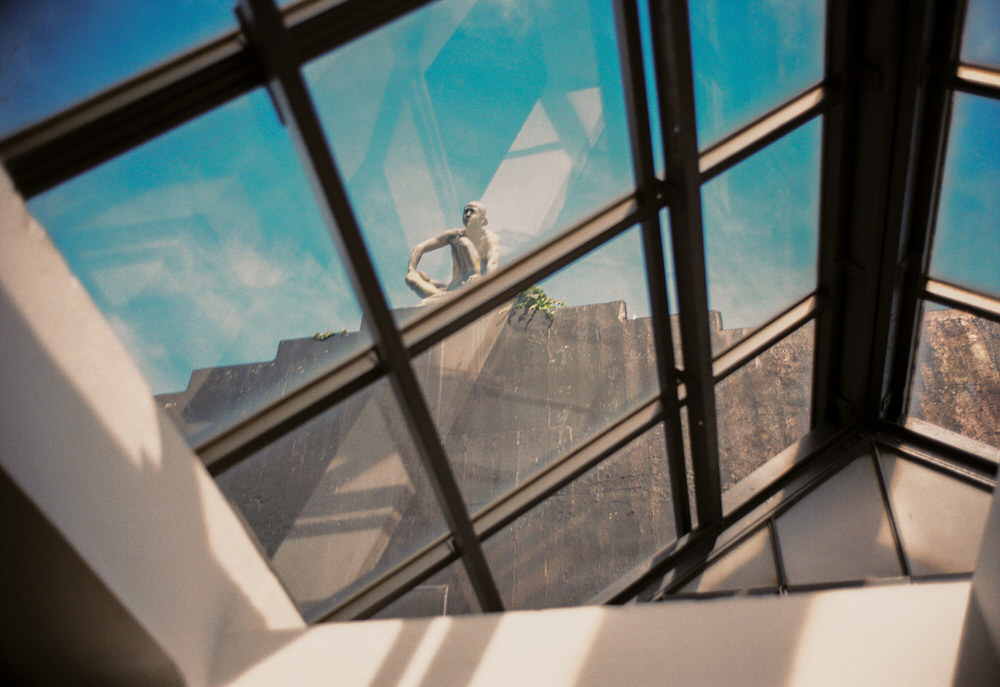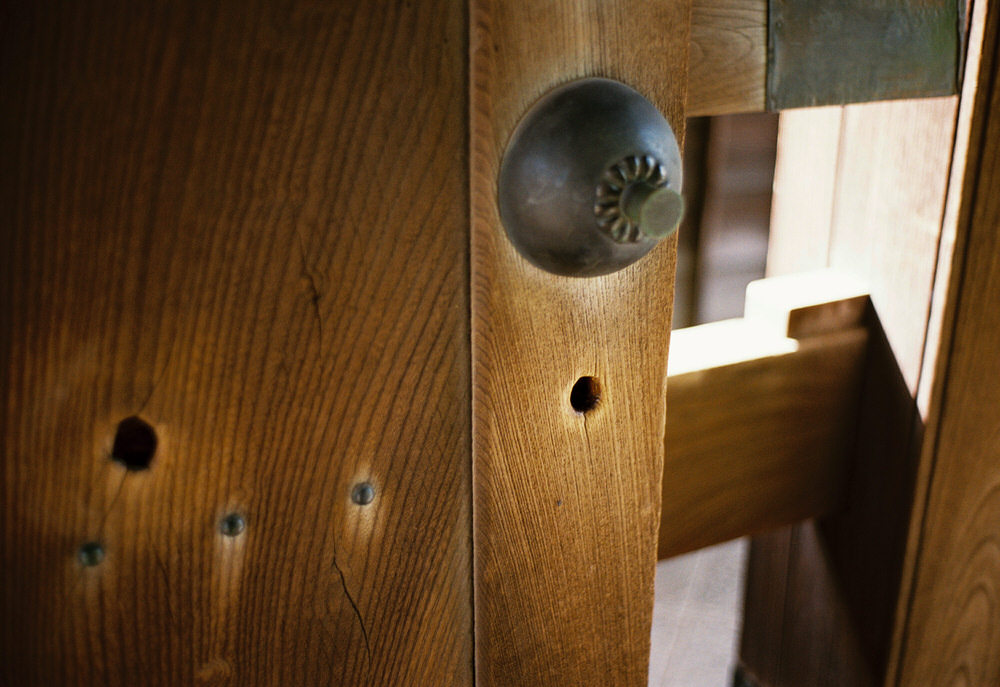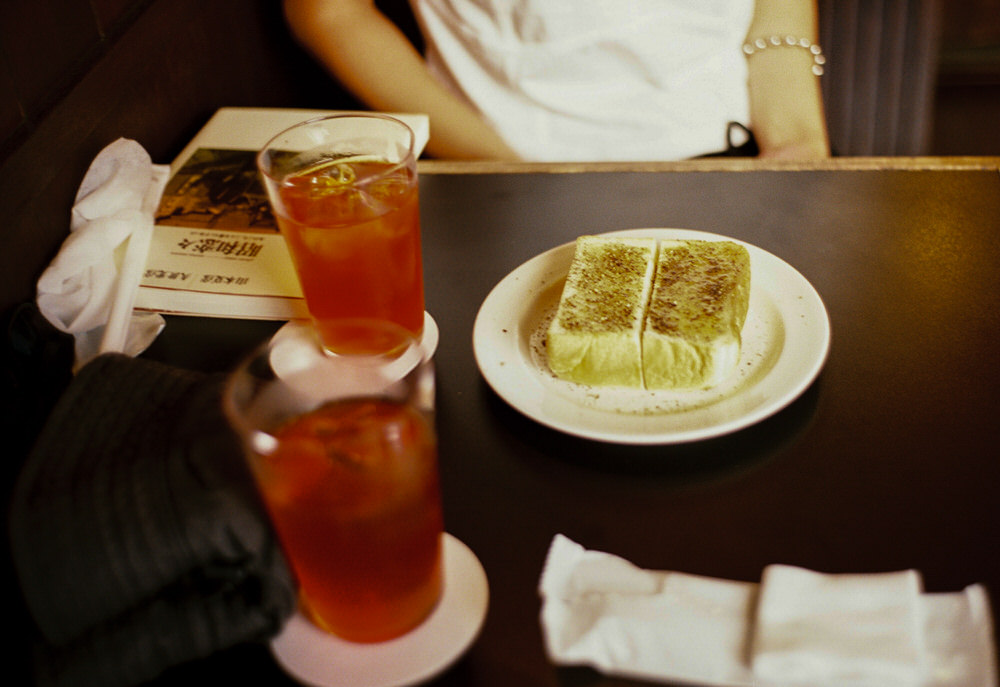
Hello Ridgeliners!
I walked wonky alleys flanked by old wooden temples and stone walls that looked like they had been there for a few hundred years and, reader, I was sweating. Sweating so much I don’t know if you could call it sweat anymore — it was just a profusion of wetness all about my body. From above, it felt as if some terrible damp hand was pushing down on my head and shoulders, pushing me into the pavement, weeping onto me, wrapping me in a wool rug and depositing me in a sauna. It was early September (just a few weeks ago!) in Tokyo and the summer heat had yet to abate, and I thought, This — this is why you don’t walk in the summer, you fool.
Summers in and around Tokyo are mostly terrible. Many people ask, When should I visit? When should I explore Japan? And I say, always: Never from July to October. And yet, some still come,1 marinating themselves in the swelter. If you were to seriously walk the old roads in August, you’d need a good six to ten liters of water a day. That’s just silly. Mega walker Chris Arnade came this past July and had to abort his walk the weather was so inhospitable. And normally July isn’t that bad. This is a guy who has walked it all. Even he couldn’t hang. The world is going a bit lopsided.
In fact, summers here are so insufferably crushing and suffocating, that I stop walking for most of them. I bike, tons, daily in fact — an electric bike is like the breath of life itself on a 35°C August afternoon. And if given the chance, I’ll head to England and walk 300 kilometers in July, eating sandwiches, buoyed by the chill and the sheep, smiling as I put on a beanie at the top of an oddly-named crag.
I taught at Yale in the Yale Publishing Course in the summers from 2011 to 2019, and made sure to spend August in New York City, since it was so much cooler than Tokyo. That’s how crazy it gets. So crazy that you’ll choose roasting garbage in the streets of Manhattan over strolling, say, a leafy Omotesando as humid as a rainforest.
But sometimes, still — sometimes I sneak in a Tokyo walk. This past summer I did once, and only once. It was hot, easily 35°C with a “real feel” of 40°C+. Unbearable. Try putting sunscreen on? Good luck, you are like a slick rock covered in moss, forever wilting, forever seeping liquids to cool the body. But you can’t, the humidity is too high, nothing evaporates — so you swim through the day, drenched, hunting for air conditioning like a parched desert wandered.

The walk began at Uguisudani Station. Arguably the cutest of all Yamanote Line stations. (Especially now that they have defiled Harajuku Station, have murdered its old, simple grace.) I met my walking partner and off we went, laughing at the heat because it was all you could do — laugh. Ha ha! The world is ending! I was showing them around the Yanaka / Nezu / Sendagi (“Yanesen”) area, one of my favorite parts of the city. It’s one of the bits within the Yamanote Line that wasn’t firebombed, lending it a unique energy — lots of older buildings, crooked roads, genuinely old temples. It’s easy to forget just how devastating those indiscriminate WWII firebombings were. Cities leveled all across the country. Women and children incinerated. And yet, the Allied plan was to use Tokyo University as a base, so it was spared. And from that, a sliver of unscorched penumbra to the north and east of the campus. That’s where Yanesen is. That’s why Yanesen wasn’t reduced to ash.
So — it’s nice to walk. We walked over towards Kayaba Coffee, a kind of kissa reimagined with a strong hipster twist. It’s managed by the owner of Fuglen, I think. Was bought out by Shiraishi-san, I think. All a bit fuzzy. Shiraishi-san owns the gallery around the corner — SCAI (Shiraishi Contemporary Art Institute) the Bathhouse. A gallery I featured in my Art Space Tokyo book some sixteen years ago (!!). There was a line out the door. F’ that. Ain’t standing around in these doom rays for a slice of toast. We walked around the corner. Peeked into the Ueno Sakuragi Atari — a collection of old homes turned into shops. No iced coffee. No dice.
Onward, we walked. Skirting the Yanaka Cemetery (home to the remains of the suicide pagoda), now so hot and parched that we looked for anything open and with a seat and a cold drink. Kissa Nikai had an hour-long wait. People had gone kissa nuts. Mercifully the flower-filled Lecoin had a seat. And great iced coffee — delicious with all sorts of funky notes. We bathed in the gentle air conditioning and were all but tempted to pull the ice cubes from the glasses and rub them on our wrists.

Backstreets from Lecoin. Yanesen is a warren of crooked alleys, and you should explore them all. (But not in August or September.) We stop by one of my favorite museums in all of Tokyo: The Asakura Museum of Sculpture. I’ve been visiting this museum for some twenty-two years. I can’t believe these numbers — twenty-two years. The world spins, time has passed, though thankfully not much has changed inside. You remove your shoes and carry them. (You’ll need them for the roof, later.) The museum is just sculptor Asakura Fumio’s (1883-1965) old home. Again, not firebombed, hence our ability to enjoy it today. A big funky Taishō-era thing with high ceilings and reading rooms full of Western books. On the back of it — the pièce de résistance, a full-on Japanese-style yashiki, with inner garden and water features and wood and porcelain pee-pee rooms you should poke your head into. The sculptures are fine, but I return again and again to sit in this home, to look at the garden, the sky, to think back on who I was and who I was with the many times I’ve visited this place. I’ve sat on the tatami mats in the second floor room, the room at the back, looking down at the pond with lovers, friends, strangers. It’s nice to have these immutable spaces in a city that so often changes without hesitation, that is so ready to cast off whatever memories may have accrued on this corner or in this space.

Shoes back on, around the corner to marvel briefly at the bullet holes in the doors of Kyōōji Temple. The Battle of Ueno took place here July 4, 1868, and the musket holes are just as they’ve been for some 155 years. Put your fingers in them as tens of thousands of other have.

Heat, still so much heat. Crushing, radiating up from the pavement. Down Yanaka Ginza with no plans to stop anywhere but — some majestic looking shaved ice. Stopped in our tracks. How can we not? So we do. A big pile with strawberry compote — it’s all we can do to keep from bursting into tears. You realize why this is a thing throughout Japan during these months — a mountain of thinly shaved ice injected into the body is as fine a thing as any to cool off.
Onward still. Around the corner a kissa, of course — Nito. Short wait, then inside for cinnamon toast and iced tea. You couldn’t pour enough iced drinks into us if you tried. More more more. We read a book about Shōwa-era Japan and look at photos of what used to be.

Just a hundred yards from Nito is another coffee shop — a kind of Nito antipode, a bizarro-world Nito, and so we must. ignis (all lower case) is what happens when we are at peace for too long, when things are too easy for us humans, when life is breezy and time and money are ample and the stresses of war or famine feel like ancient fables. ignis serves up cups of coffee on the average of about $20, though you can easily spend $100 on a couple sips. The staff are all young, and it’s tough to tell who works there and who is a customer. It’s like a traditional Japanese snack (sunaku) — if instead of cheap alcohol (though they have that too — mixed with coffee) they served eye-wateringly expensive, pathologically-prepared coffee handpicked by a single tiny man in Ecuador, poured over chilled metal balls into thin-walled glass goblets. But when in Rome, spend a lot on coffee. So get a couple cups. Slurp loudly. (Hey, we’re pros.) They’re fine? I mean, delicious, sure, but I’m not sure you need to spend this much on coffee. Most of the value is in watching the customers. So many! Who knew this market existed. And in such a working class neighborhood. Who are these coffee dandies who demand so much of their caffeine? Someone brings out a small sack of green beans and everyone takes a moment to dip their hand into the smooth coolness and ooohh and ahhhhhh. It feels illicit. A family of three come in wearing flip-flops and spend $80 on a few cups. Their daughter — about six or seven — is apparently a coffee fanatic, and has an Instagram account with tens of thousands of followers to which I will not link because it all makes me so uncomfortable. But they’re nice! And the daughter is a cutie. But I do worry her parents are inducing brain damage by having her drink so much coffee at such a young age in the name of likes. Still — everyone is kind and voluble and happy to talk about all the orgasmic “flavor-journeys” they’re experiencing in each sip. In the closet, a young man roasts on a tiny, fussy-looking roaster, and the seven-year-old watches intently, studying, planning her next Instagram attack. We have paid a tidy sum to go through the looking glass, and that’s fine by me.
The sun lowers. The heat becomes less heaty. We walk down “Snake Alley” — a street that was once a river (and perhaps once, long, long ago filled with snakes). Many such streets were just that — rivers. Tokyo, once a Venice-like city of canals, then paved over in the name of modernity and highways in the mid-twentieth century. You can still see a bit of the old river culture in movies like Tokyo Monogatari.
Past Coutz Café, an area stalwart. Past the patently insane cat café, that looks as if it may finally be on its last legs. (Again, a place I visited twenty-two years ago in a state of continuous shock and awe.) Up behind the equally bizarre Daimyo Clock Museum. Up Miura-zaka to Renge-ji. Before us once stood a truly majestic Himalayan Cedar. Now it looks like it’s been trimmed to within an inch of its life. I wonder what happened. Typhoons? Age?
More backstreets to the edge of Tokyo Geidai, the premier fine art college of Japan. That’s part of what makes this area vibrant — it’s sandwiched between Geidai and Todai, the two preeminent universities of Japan. One full of counter-culture weirdos who go on to become soporific politicians, and the other, artists. It is festival day and all the students command their wacky booths and are dressed up, and it’s as lively and wonderful as you can imagine. Then into Ueno Park, past the National Museum of Western Art and the Tokyo National Museum Gallery of Treasures and the Tokyo Metropolitan Art Museum — three of the most important museums in the city. And finally into Ueno Station — recently rebuilt, connected to the park in a more elegant, more pedestrian-friendly way.
And thus ends our terrible summer walk, which in the end was quite lovely. Though we are gross, so gross, and stink like sad, wet, puppies. One summer walk was enough, at least for this year.
Weeks pass. Now, the heat breaks. The humidity is bearable. Sweat functions as intended. Soon — sweaters. And I’m happy for that, bring it on. Because now — now walking season begins.
C
Noted
-
I’m still traumatized for the athletes in that officials had the audacity to hold the 2020 (2021) Tokyo Olympics in August … (In 1964 they sensibly held them in October.) ↩︎
